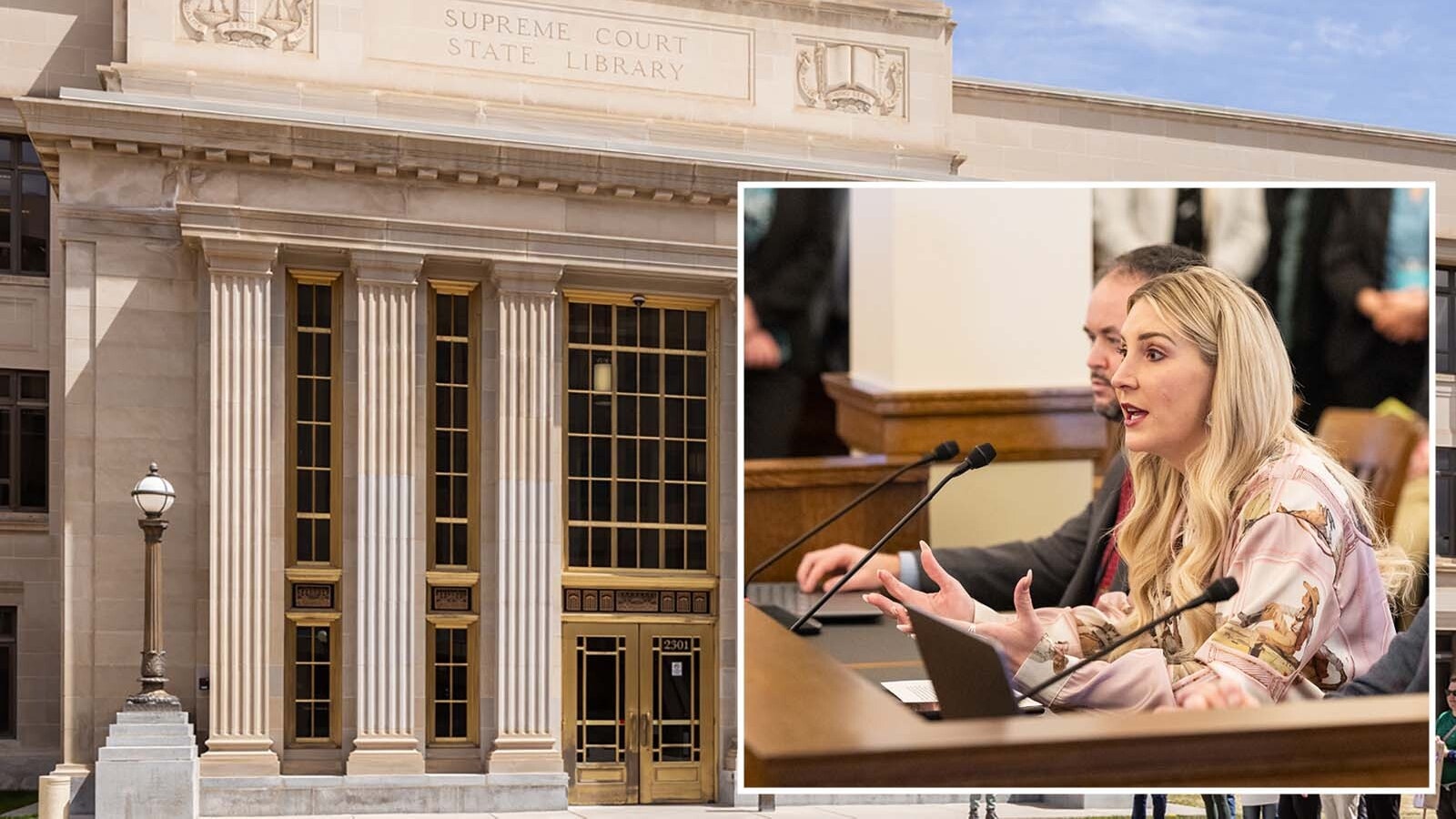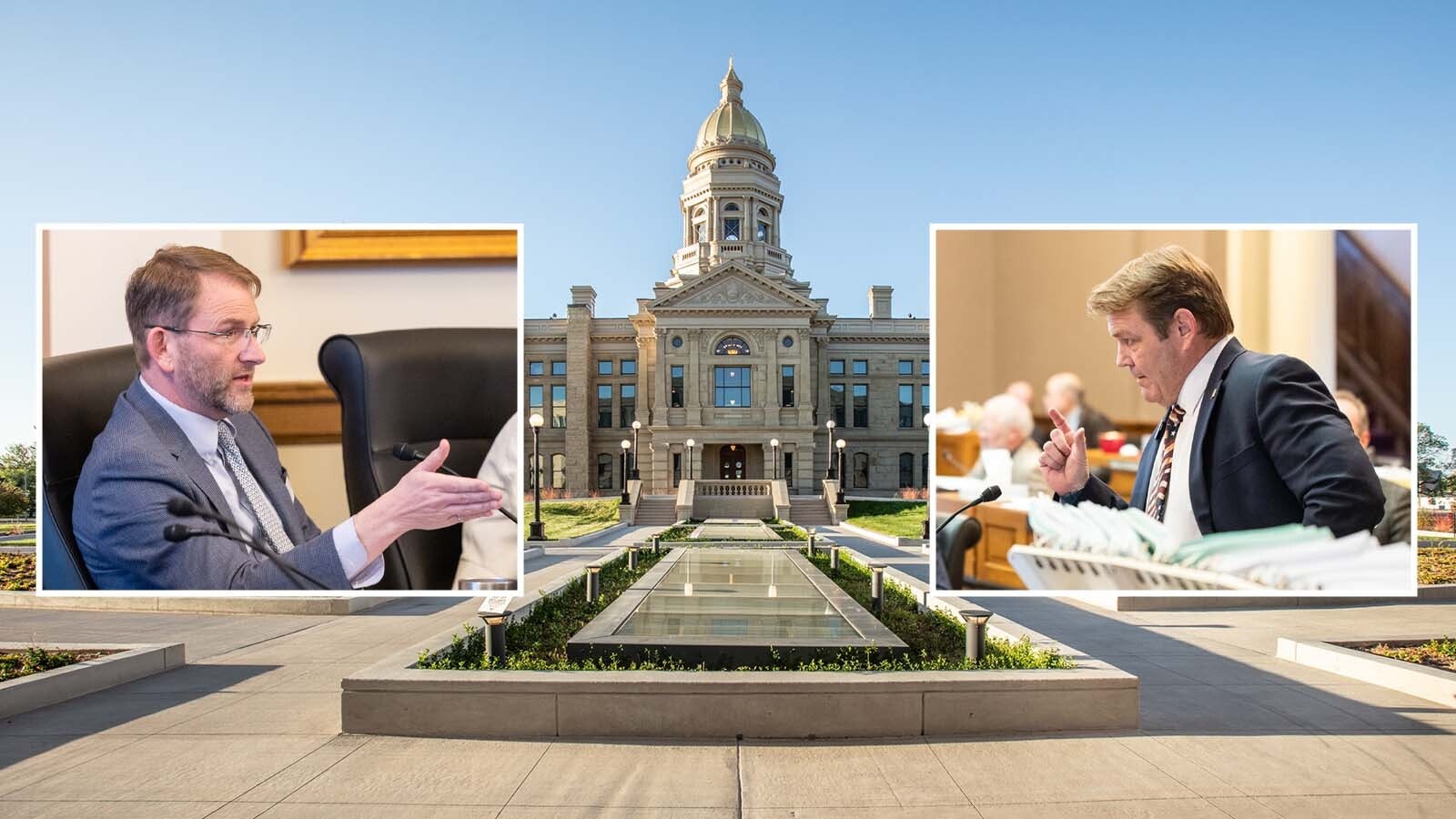Having one working ambulance isn’t enough of an emergency to convince the Wyoming State Loan and Investment Board (SLIB) that Lusk, population 1,500, needs another one.
On Thursday, the town requested $300,000 from SLIB’s emergency mineral royalty grant fund to buy and equip a new ambulance.
Mike Mayville, the ambulance director for Lusk, said one of the town’s ambulances that dates back to 2003 has to be immediately retired. Another ambulance from 2006 has broken down five times during patient transports and he believes it shouldn’t travel far from city limits. The only functional ambulance the town owns is a 2014 model.
“We are in a pretty critical situation,” Mayville said about the town’s ability to respond to medical emergencies.
SLIB voted 3-2 to reject the Lusk ambulance request with Gov. Mark Gordon, State Auditor Kristi Racines and Superintendent of Public Instruction Megan Degenfelder voting to reject, and State Treasurer Curt Meier and Secretary of State Chuck Gray voting to accept.
Those who opposed the grant request said Lusk’s situation doesn’t qualify as an emergency.
Under state law, to qualify for an emergency mineral royalty grant (MRG), a need must be an immediate and direct threat to human safety. Emergency MRGs are awarded to alleviate an emergency situation that poses a direct and immediate threat to public health, safety or welfare. Funding for this account comes from mineral royalties.
SLIB rejected all three emergency requests it considered Thursday.
Serious Concerns
One of the Lusk ambulance breakdowns happened just east of Glenrock on Interstate 25 while it was transporting an elderly man who had a collapsed lung but was in overall stable condition. The patient was picked up by another ambulance and taken to Banner Health in Casper.
“The patient luckily was pretty good spirited about it,” Mayville said.
The three ambulances serve all of Niobrara County, as well as other portions of Platte, Weston, Goshen and Converse counties and parts of western South Dakota and Nebraska.
Funding-wise, Mayville said Niobrara County government tends to be in an even worse financial position than Lusk. This is all happening while Lusk is engaging in a large, long-term infrastructure project to replace a water and sewer system that is about 50 years past its life expectancy.
Many Sleepless Nights
Gordon said funding EMS services is a statewide challenge particularly felt in Wyoming’s least-populated areas.
Mayville said he spends many sleepless nights wondering if there will be another ambulance breakdown that could lead to actual health consequences for a patient. The cause hits home for Mayville, who was served by one of the ambulances in January for his own health emergency.
The town of Lusk has been budgeting and saving for a new ambulance, but Mayville said with inflation and rising costs, it hasn’t been able to keep up, only showing $147,000 saved.
The town’s emergency request to SLIB was for 67% of the $446,000 cost for a new ambulance.
Meier said the request wouldn’t devastate the $9.7 million MRG fund.
While he said it should come as no surprise to Lusk that its ambulances are old, Meier expressed doubt the town could have done anything more to save for new ambulances.
Staff from the Office of State Land and Investments, which oversees the grant money, said they did not believe the Lusk proposal met the definition of an emergency as this type of purchase could theoretically be planned for in advance.
“Assets at the end of their useful life just don’t qualify for emergency funding,” OSLI Grants and Loans Manager Beth Blackwell said.
Gordon agreed and said there are many communities in the same situation as Lusk.
Competitive
An emergency MRG request can be brought at any SLIB meeting and allows an applicant to not have to compete against others for a grant request. It also allows an applicant to apply for up to 100% of a project’s cost. Emergency funds can also be used to reimburse money that was spent prior to the grant award.
Blackwell said the town could apply for a normal MRG grant or take out a loan through this program, but staff from the Attorney General’s office said the latter would be difficult to secure for the Lusk ambulance.
A regular MRG competes against 20-30 other applications for the single pool of money, and the next opportunity Lusk would have to apply for a regular grant is June 2024. Meier said SLIB will probably appropriate the money at that time.
Gray also brought up the idea of crowd-sharing emergency transports, a practice used in Iowa.
Meier asked if Lusk could be granted the money with the requirement that it must save a certain amount of money each year for future ambulances. He urged OSLI staff to consider that one set of rules and regulations doesn’t fit every community.
“I understand that some of these smaller towns, they don’t have the critical mass necessary and the amount of people, and you can’t use water funds and direct them or electrical funds and use them for other areas of government,” he said. “There’s got to be a way to support our smaller counties and cities.”
Torrington Request
SLIB similarly rejected a $406,606 request by the city of Torrington to replace its sewer vacuum truck, also finding the request doesn’t qualify as an emergency.
The truck is used on an almost daily basis in Torrington to clear tree roots and grease blockages from sewer lines.
Torrington’s old truck went out of commission when it got in a wreck with a semi trailer on May 23. The city had been renting a replacement for $12,000 a month, but that contract recently expired. If the city can’t fix its old truck, it wants to replace it.
Blackwell suggested that the board could provide a few months’ worth of payments to Torrington or that the city could pursue MRG loans for the purchase. Torrington officials indicated it will go the loan route.
Meeteetse Request
The town of Meeteetse also requested $924,073 to help fund its 2023 water treatment plant and upgrades project. The estimated cost for the project is $1.6 million.
The money would match $671,000 America Rescue Plan Act grants already awarded to the town.
SLIB also rejected this request.
Meetetse Town Clerk Angie Johnson said the plant was recently down for 17 hours, shutting off running water during that time.
Wyoming Department of Environmental Quality and Wyoming Water Development recommended against funding the grant as an emergency.
Meeteetse had also previously applied for $549,000 in U.S. Department of Agriculture grants, but only was offered loan options it could not afford.
State loan options also were recommended to Meeteetse.
Leo Wolfson can be reached at leo@cowboystatedaily.com.





